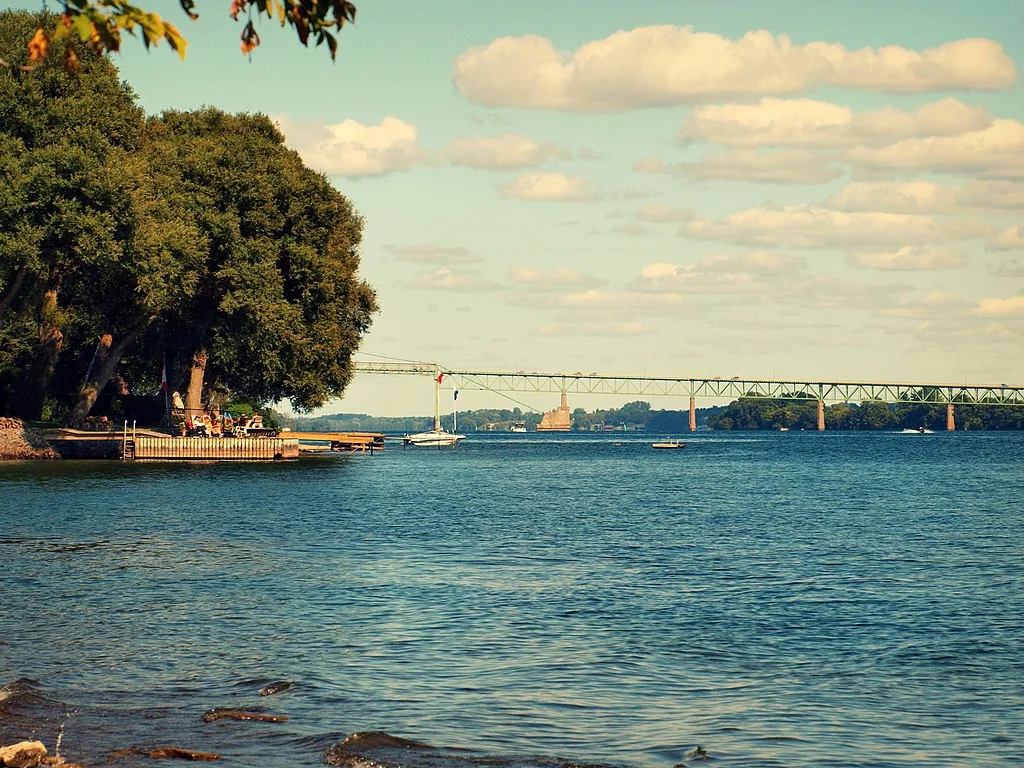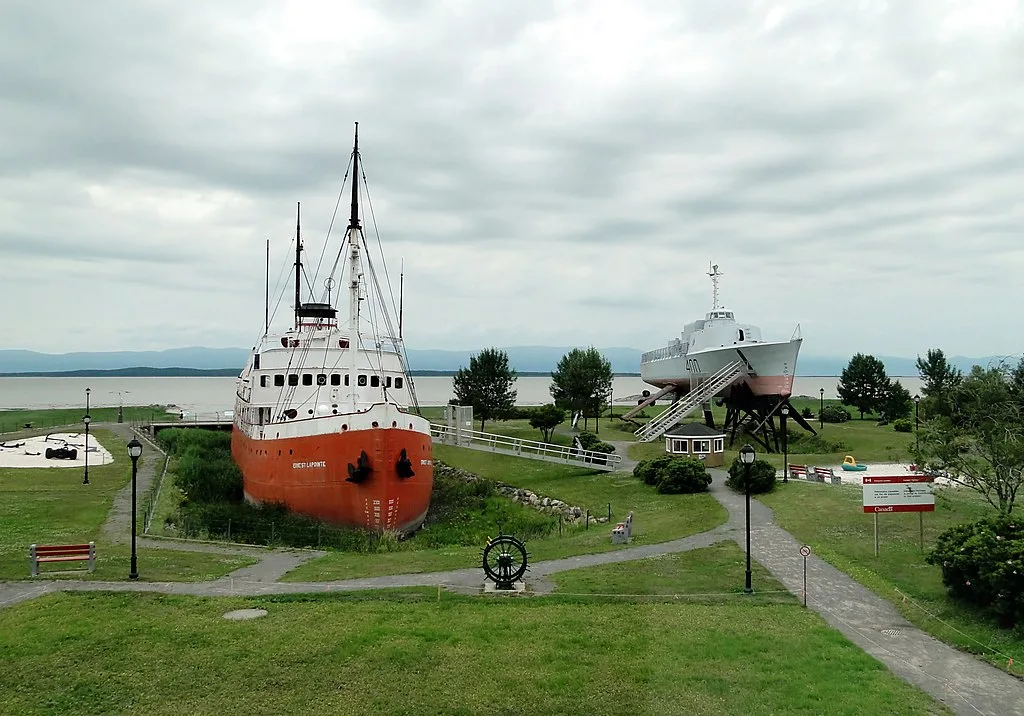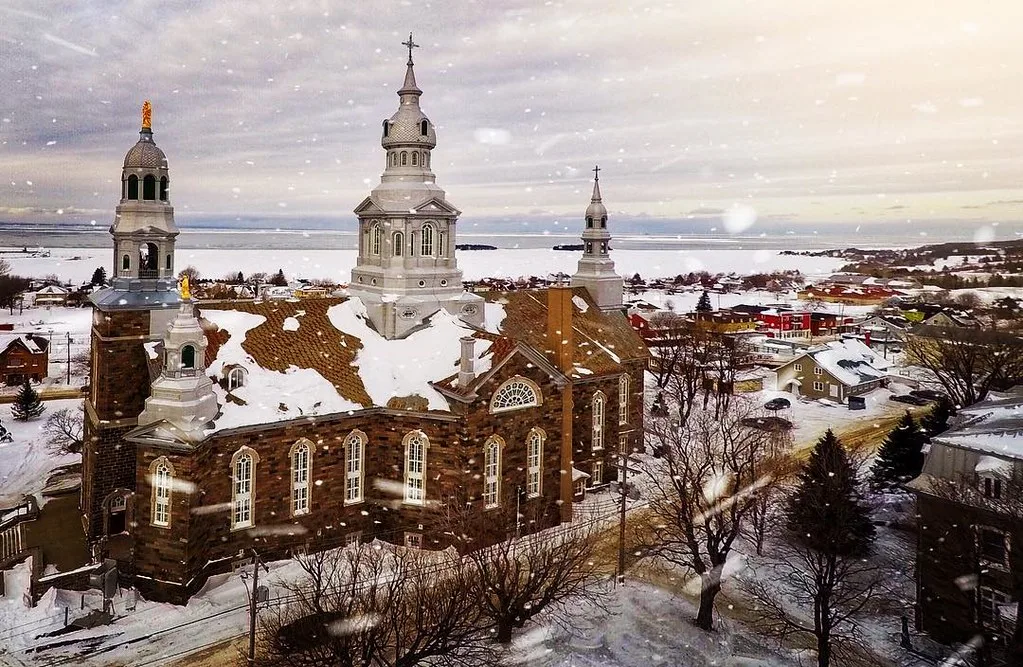Imagine a road that winds along one of North America’s most iconic rivers, where every turn reveals breathtaking views and every stop invites you into a piece of history. Welcome to Quebec’s Route des Navigateurs, a journey that offers more than just a scenic drive.
Whether you’re a history enthusiast, a nature lover, or a cultural explorer, this route has something for everyone. Discover charming towns with heritage homes, historic lighthouses standing tall against the backdrop of the Saint Lawrence River, and vibrant communities that celebrate their unique cultural influences.

Author: Michael – wikimedia.org
Historical Background
Origins of Route des Navigateurs
The Route des Navigateurs, also known as the Navigators’ Route, is a scenic pathway that traces its origins back to the early days of exploration and settlement in Quebec. This route runs along the southern shore of the Saint Lawrence River, a waterway that has been vital for centuries. The river was a primary route for Indigenous peoples long before Europeans arrived. They used it for fishing, trade, and travel, establishing a rich cultural heritage along its banks.
When European explorers, such as Jacques Cartier and Samuel de Champlain, arrived in the 16th and 17th centuries, they recognized the strategic importance of the Saint Lawrence River. It became the gateway to the interior of North America, leading to the establishment of New France. Settlers began to populate the riverbanks, founding villages and towns that would later become key stops along the Route des Navigateurs.
The route itself was officially designated much later, as part of efforts to promote tourism and preserve the region’s historical and cultural heritage. The goal was to create a scenic byway that highlights the maritime history, picturesque landscapes, and unique local culture of the Saint Lawrence River corridor.
Historical Significance in Quebec
- The River’s Role in Trade and Transportation: The historical significance of the Route des Navigateurs in Quebec cannot be overstated. This region played a crucial role in the development of the province and the country. The Saint Lawrence River was the main artery for trade and transportation during the colonial period, connecting Quebec City and Montreal with the Atlantic Ocean. This made it possible for goods, people, and ideas to flow in and out of New France, fostering economic growth and cultural exchange.
- Preserved Historical Architecture: Many of the towns along the Route des Navigateurs have preserved their historical architecture and landmarks, offering a glimpse into Quebec’s past. For instance, Kamouraska is known for its beautiful old homes and churches, reflecting the architectural styles of the 18th and 19th centuries. The town of Rivière-du-Loup, another significant stop, has roots that go back to the early fur trade era and continues to be an important cultural center.
- Maritime Heritage: Maritime history is a central theme along the Route des Navigateurs. Lighthouses, shipyards, and maritime museums dot the route, each telling stories of seafaring adventures, fishing industries, and shipbuilding. The Musée Maritime du Québec in L’Islet, for example, offers fascinating exhibits on the history of navigation, shipwrecks, and the lives of sailors who navigated the treacherous waters of the Saint Lawrence River.

Author : Bernard Gagnon – wikimedia.org
Cultural Influences
The Route des Navigateurs also highlights the influence of various cultural groups that have shaped the region. The Basque fishermen, who came to the shores of Quebec in the early 16th century, left a lasting legacy, particularly in the town of Trois-Pistoles. Here, visitors can learn about the Basque influence on local culture, including unique culinary traditions and festivals that celebrate this heritage.
Everyday Lives of River Communities
Additionally, the route offers insights into the everyday lives of the people who lived and worked along the Saint Lawrence River. Historical sites, such as old mills, farms, and trading posts, provide a tangible connection to the past. These sites demonstrate how communities adapted to the challenges of river life, from farming the fertile lands to navigating the icy waters in winter.
Key Attractions Along the Route
Travelers along Quebec’s Route des Navigateurs will encounter a variety of captivating towns and landmarks. Each stop offers unique sights and experiences that showcase the beauty and history of the region.
Kamouraska
The charming town of Kamouraska is known for its picturesque landscapes and historic architecture. Visitors can enjoy stunning views of the Saint Lawrence River and stroll through quaint streets lined with heritage homes. The town’s name comes from an Indigenous word meaning “where rushes grow at the water’s edge,” reflecting its deep connection to the river. Kamouraska’s old churches and well-preserved homes provide a glimpse into the past, making it a perfect place for history buffs and architecture lovers.
Rivière-du-Loup
In Rivière-du-Loup, visitors can relax at the Parc de la Pointe, where panoramic views of the river and a peaceful ambiance make it an ideal spot for relaxation. The park offers walking trails, picnic areas, and lookout points where you can watch the stunning sunsets over the water. Rivière-du-Loup is also home to several historic buildings and museums, such as the Manoir Fraser, which provides insights into the region’s history and culture.
Trois-Pistoles
Further along the route, the town of Trois-Pistoles boasts beautiful churches and a fascinating Basque cultural influence. The Église de Trois-Pistoles is a striking example of religious architecture, and the town’s history is closely linked with Basque fishermen who settled here in the early 16th century. Visitors can explore local museums and cultural centers to learn more about this unique heritage, and the town’s lively festivals celebrate Basque traditions with music, dance, and food.

Аuthor : Rikki / Julius Reque – flickr.com
La Pocatière
Not to be missed is the lighthouse in the town of La Pocatière, which stands as a beacon of the region’s maritime history. The lighthouse offers spectacular views of the river and the surrounding countryside. La Pocatière is also home to one of the oldest agricultural colleges in North America, and its beautiful campus is worth a visit. The town’s maritime museum provides an in-depth look at the history of navigation and shipbuilding in the region.
Other Notable Landmarks
In the town of Saint-Jean-Port-Joli, visitors can explore the Musée de la Mémoire Vivante, which preserves the oral histories and traditions of the local people. The town is also famous for its woodcarving artists, and galleries showcasing their intricate works are a must-visit.
The Île-aux-Grues archipelago, accessible by ferry, offers a unique adventure with its stunning natural beauty and abundant wildlife. Birdwatchers will enjoy the diverse species found here, and the islands’ quiet, untouched landscapes provide a perfect escape from the hustle and bustle of everyday life.
In the town of Berthier-sur-Mer, the Grosse Île and the Irish Memorial National Historic Site commemorate the Irish immigrants who arrived in the 19th century. The site includes a museum and guided tours that provide a moving tribute to the challenges and resilience of these early settlers.
Cultural and Historical Experiences
The Route des Navigateurs is rich in cultural and historical experiences. Many towns along the route host festivals and events celebrating their heritage. In L’Islet, the Musée Maritime du Québec offers fascinating exhibits on the history of navigation and shipwrecks in the Saint Lawrence River. Visitors can learn about the lives of sailors and the challenges they faced on the open waters.
Conclusion
Quebec’s Route des Navigateurs traces its origins back to early exploration and settlement, showcasing the region’s maritime history and cultural heritage. The route highlights the historical significance of the Saint Lawrence River in trade, transportation, and cultural exchange. Travelers can explore charming towns with preserved historical architecture, such as Kamouraska and Rivière-du-Loup. The route offers insights into diverse cultural influences, including Basque heritage in Trois-Pistoles and Irish immigrant history in Berthier-sur-Mer.Outdoor activities, scenic views, and cultural festivals along the route provide a rich and fulfilling travel experience.
FAQs
What is the Route des Navigateurs?
The Route des Navigateurs is a scenic route in Quebec that highlights the region’s maritime history and cultural heritage. It follows the Saint Lawrence River and showcases historical towns, cultural influences, and outdoor activities.
Where is the Route des Navigateurs located?
The Route des Navigateurs is located in Quebec, Canada, following the Saint Lawrence River and passing through towns such as Kamouraska, Rivière-du-Loup, Trois-Pistoles, and Berthier-sur-Mer.
What can travelers expect to see along the Route des Navigateurs?
Travelers can explore charming towns with preserved historical architecture, learn about diverse cultural influences, and enjoy scenic views, outdoor activities, and cultural festivals.
What historical significance does the Saint Lawrence River have?
The Saint Lawrence River has been historically significant for trade, transportation, and cultural exchange. It has played a crucial role in the exploration and settlement of the region.
Which towns are notable stops along the Route des Navigateurs?
Notable towns along the route include Kamouraska, known for its historical architecture, Rivière-du-Loup, Trois-Pistoles with its Basque heritage, and Berthier-sur-Mer, which highlights Irish immigrant history.